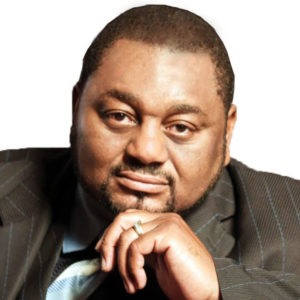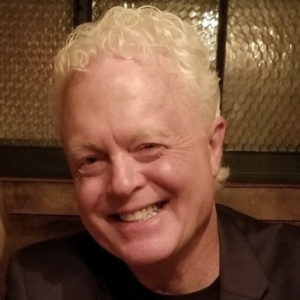Developing a long-range plan
ong-range planning for an organization is never an easy task. It can be especially demanding when the organization has a historic track record of pioneering service. This was the challenge we faced not long ago at the Jewish Home and Hospital Lifecare System (JHHLS) in the New York metropolitan area.
For more than 155 years, the JHHLS mission has been to provide health, housing, and supportive services for frail elders. Today, the Jewish Home's scope includes three nursing homes/rehabilitation centers (in Manhattan, the Bronx, and Westchester County), low- and moderate-income se-nior housing, a long-term home healthcare program serving more than 1,000 clients, a home health aide agency, medical and social adult day programs, telemedicine, and a transportation program serving the system's elders by bringing them daily to day centers and outside medical appointments. Its governance structure consists of a sys-tems board and four divisional boards, one for each nursing home and the Community Services Division.
As a leader in aging services, JHHLS has provided many of these services before they were mandated or even the norm. It had the first nursing home in the country to have a full-time social worker (1938), subsidized apartments for self-reliant elderly (1939), home healthcare services (1940), full-time physician services (1942), a department of rehabilitation (1956), and medical-student training in geriatrics (1984). Our emphasis, as a not-for-profit direct service center serving 10,000 seniors annually, is on dignity, quality, innovation, research, and education.
To maintain 21st century leadership, the board of trustees wanted a long-range plan that would prioritize and wisely guide its initiatives and decision-making process for the next 15 years. The issues needing consideration included future demographic imperatives; potential government initiatives; the challenge of meeting the needs of an increasingly diverse population of seniors aged 85+; evolving consumer aspirations, including the desire to remain at home through changing circumstances; aging and inadequate physical plants; the desire for culture change; the impact of managed care; nursing shortages; unstable revenue and reimbursement streams; and increasing government regulation.
Thus, for the third planning process in our 155-year history, the chairman of the system's board of trustees formed a committee of board members and executive management. The committee conducted field trips to facilities identified as innovators. Guest speakers discussed demographics and healthcare delivery trends, end-of-life care, community planning, governmental regulations, and political outlooks. The committee also held focus groups; conducted individual and group interviews with staff, residents, families, administrators, and department heads; and organized a retreat for the system's board, the board of trustees of each nursing home, and the Community Services Division.
The resulting long-range plan recognizes that the future will focus on service delivery in individuals' own homes; it identifies the caregiver as a member of the “service family,” for whom supports are a part of our mission; it notes that wellness is an organizational priority; and it focuses on diversifying revenue streams. Although the process culminated with a renewed passionate commitment to care for the elderly, it fundamentally shifted the organization's focus to lifetime care, with an emphasis on wellness, care for caregivers, and providing community services regardless of recipients' income. Our new mission statement reflects this: “We are passionate about the quality of aging. The services we provide support health, individuality, and dignity. Our mission is Lifecare.”
Our mission is guided by six “pillars” to support and guide the strategic plan for 2020: (1) empowering the workforce with concepts of leadership and customer-focused service; (2) conducting research, education, and advocacy for innovative methods of caring, sharing best practices, and promoting quality aging through prevention and technology; (3) addressing the needs of individuals and caregivers to achieve person-centered care and anticipate as well as satisfy their needs; (4) welcoming the Jewish community to ensure a Jewish environment that is respectful of all religions; (5) creating communities of caring in and outside existing and future facilities; and (6) promoting wellness to support healthy aging and a more holistic approach, striving for preventive, wellness-oriented care at home or in other settings.
The long-range planning process behind these developments taught us several lessons about what to do and not do in conducting such an effort:
It is important to anticipate and manage planners' expectations. Managing expectations is important to every significant process within the not-for-profit sector. For long-range planning, specifically, it is important that all internal and external publics understand the realities of the process, including the required time frame, the required commitment by committee members, the costs, the opportunities for staff and other input, and the format and content of the final product.
Beyond the management of expectations, the full board must be engaged in the process. Meaningful communication is essential throughout the process, from planning through execution, and this requires commitment at the top. Our committee of trustees met monthly for 23 months, and more frequently as the process concluded. Moreover, members of the long-range planning committee interviewed all of the system trustees and many of the divisional trustees early in the process to understand their specific perspectives. Approximately 10 months after the process was begun, a draft of the “pillars” was discussed with the trustees in a series of four focus groups. Their input informed the final version of the pillars and the specific work that emerged. Ultimately, a full-day retreat provided the opportunity for discussion and recommendations for revision of the long-range plan, before submitting it for the full board's approval.
In addition to the board, it is essential to recognize and involve all internal publics (residents, clients, family, staff, volunteers), as well as external publics (funding sources, regulatory bodies, trade associations, and key information resources), through meaningful dialogue during and after the process. During the planning process there were specific and distinct meetings with family associations and resident councils, town hall meetings with staff, department head meetings, etc. E-mails, newsletters, new-hire orientation, and items on the Web site also focused on long-range planning. The external publics were regularly updated on the plan, as well.
The long-range plan should be specific with regard to costs and revenue and should inform the organization's annual budgeting and goal setting. Any successful long-range plan must include an analysis of the total cost of implementation. The plan should specifically budget for the costs and revenue associated with each major project and/or goal and include business plans for implementation. The itemized goals and projects then form the basis for a major fund-raising capital campaign. The extent to which existing resources are to be used should also be specified.
The responsibility of each operating division with regard to the planning process and ultimate implementation must be made clear. The input of both the boards and the staff of each of the operating divisions was sought in developing this system-wide long-range plan. Although the overall plan is broad in scope, the priorities and realities of each division make its implementation somewhat different for each. Following completion of the long-range plan, therefore, each division created an annual strategic plan to guide its thinking and work. Obviously, each division's annual goal setting was consistent with the long-range plan.
The ultimate long-range plan document should be regarded as a dynamic tool, to be updated annually, and used to guide goal setting, budgeting, recruitment of trustees, etc. Once the plan was developed, the long-range planning committee's work was considered completed and the committee disbanded. In its place, a long-range plan implementation committee was formed with trustees from the four operating divisions, the system board, and three senior managers. This committee meets twice a year to fulfill its responsibilities of monitoring implementation of the long-range plan. This includes applying specified benchmarks, reviewing the overall long-term care environment, and identifying unintended consequences of plan implementation. The committee brings any proposed changes, additions, or deletions to the entire system board for approval on an annual basis.
To send your comments to the author and editors, e-mail weiner0807@nursinghomesmagazine.com.
I Advance Senior Care is the industry-leading source for practical, in-depth, business-building, and resident care information for owners, executives, administrators, and directors of nursing at assisted living communities, skilled nursing facilities, post-acute facilities, and continuing care retirement communities. The I Advance Senior Care editorial team and industry experts provide market analysis, strategic direction, policy commentary, clinical best-practices, business management, and technology breakthroughs.
I Advance Senior Care is part of the Institute for the Advancement of Senior Care and published by Plain-English Health Care.
Related Articles
Topics: Articles , Leadership











